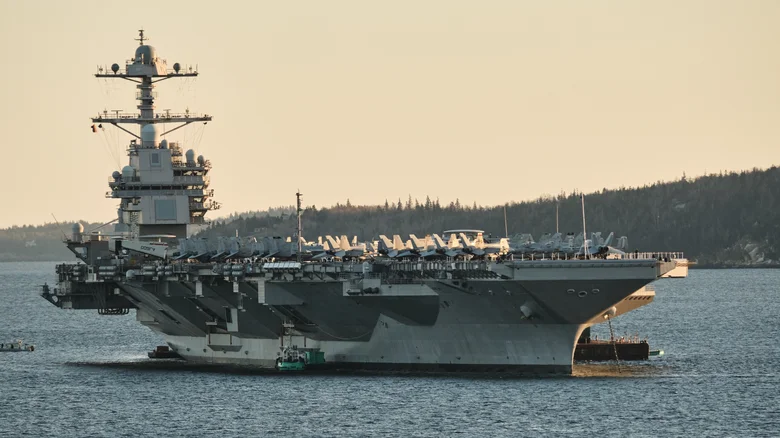
HOW HIGH IS THE FLIGHT DECK ON AN AIRCRAFT CARRIER?
SLASHGEAR – BY C. GORDONAUG. 6, 2024
It’s rare that you’re ever looking down at the flight deck of an aircraft carrier, unless you’re standing on one or a pilot landing. The rest of us are usually staring up at awe at the carrier’s towering flight deck, wondering how high it is, among other things. The great height isn’t simply there for the sake of being imposing, but helps facilitate seamless take-offs and landings, and protects the ship and its personnel from dangerous waves while in open water.
The vertical distance between the surface of the water and the flight deck is called freeboard, and depending on the carrier itself, and the aircraft carrier load, can be around 65 feet above the water. The height is crucial to the flight deck’s safety and helps the carrier exist above the chaos of any passing storm, so planes and can continue take off and land with relative safety no matter the conditions.
Other carrier flooding safety features, and swim call
Since aircraft carriers are essentially floating airbases that can speedily circumnavigate the globe without refuelling, multiple aspects of their design are intended to offset the swell of the ocean. The flightdeck is rife with drains and gutters to funnel large quantities of water trying to cause trouble on deck away from the surface, and the design of the hull helps to mitigate the power of oncoming waves, with a protruding bulb below the waterline that modulates potential wave drag, ultimately increasing speed and stability.
Of course, safety features aside, one can’t help wondering what it would be like to go swimming off an aircraft carrier’s lofty flight deck. It’s clearly not a vertical distance you’d want to jump, but there are hangar bay elevators in case you do dive into the water. There’s even a tradition for that, named swim call.
Swim call is Navy tradition in which personnel on numerous types of vessels, including submarines, amphibious command ships, and yes, aircraft carriers, jump into the water for a little portside R&R. In the case of carriers, sailors ride the elevators down about 30 feet or further to a much more manageable height to jump, though they’re still advised the use good form on the way down to prevent injury.
It’s been a tradition in the U.S Navy since World War II but appears to date back to the 19th-century British Royal Navy when seemingly filthy sailors were ordered to get into the water to keep clean, known at the time as “All Hands to Bathe.” We suspect, that was probably not as much fun.



